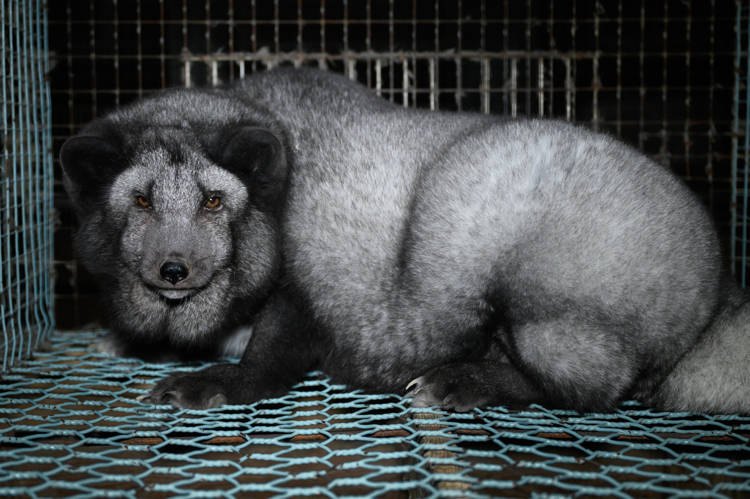Finland is Europe’s largest producer of fox fur, but undercover investigations have repeatedly shown that arctic fox farms engage in dubious practices, such as fattening the animals until they become deformed, just to increase their fur yield.
Despite a concentrated effort by PETA and many high-profile celebrities to deter the general public from buying natural animal fur, the fur trade has been booming. Around 100 million animals are killed for their fur every year, and the industry is worth tens of billions of dollars. While China is by far the world’s largest fur producer, thanks in great part to the lack of concrete animal welfare legislation, Finland is the largest fur producer in Europe, and the conditions in its animal farms are worse than you can probably imagine. Millions of arctic foxes are kept in tiny metal cages with no bedding, very little light, and are stuffed with food until they become deformed so that more fur can be harvested from them.

Photo: Oikeutta eläimille/Facebook
Finnish animal rights group Oikeutta eläimille (Justice for Animals) first shocked the world in 2016, when it released a series of photos showing arctic foxes so obese they could barely move around in their tiny metal cages. The so-called “monster foxes” reportedly weighed up to 40 pounds, five times their weight in the wild, and exhibited unusual behavior, such as pacing back and forth in their enclosures.
“They do it because it releases endorphins [stress-relieving brain chemicals]. It is distressing to see,” Kati Pulli, a vet and a director of the Finnish Federation for Animal Welfare Associations, told Mail Online.
“Sadly, it doesn’t surprise me as I have visited fur farms and we saw some as big as these,” Ms. Pulli added. “Typical health problems include bent legs, which may be the result of being overweight and lack of exercise. The folds of skin on their body might cause skin inflammation and their eyelids may become loose. They may have red or pink eyes because of infections, which are contagious.”
The cages that the arctic foxes are kept in at some of these farms measure only 0.8 square meters, barely enough for the animals to turn around in, and only feature a stick for them to bite on. There is nowhere for them to dig, a behavior that comes naturally for foxes in the wild, so they are constantly stressed.
In 2017 fur producers promised to stop breeding oversized animals to increase the volume of fur, but a recent investigation by Mirror Online journalist Nada Farhoud revealed that arctic foxes are still being overfed. The photos are not as shocking as those released five years ago, but they are still heartbreaking to look at.
“This distressed Arctic fox is missing an ear. Others pace incessantly and have pulled out their overgrown fur – signs of psychological distress,” reported. “They have deformed feet, diseased eyes, and some of them are so obese they are what is known as ‘monster foxes'”.
Each year, between one and two million foxes are raised on around 750 fur farms in Finland. Their nightmarish lives are usually short, as they are electrocuted and then skinned at just eight months of age.
Unfortunately, with fur products as popular as they are in today’s luxury fashion industry, there is little anyone can do to stop or end the abuse of arctic foxes in Finland and other farms around the world. The only viable solution would be to switch to sustainable artificial fur.












